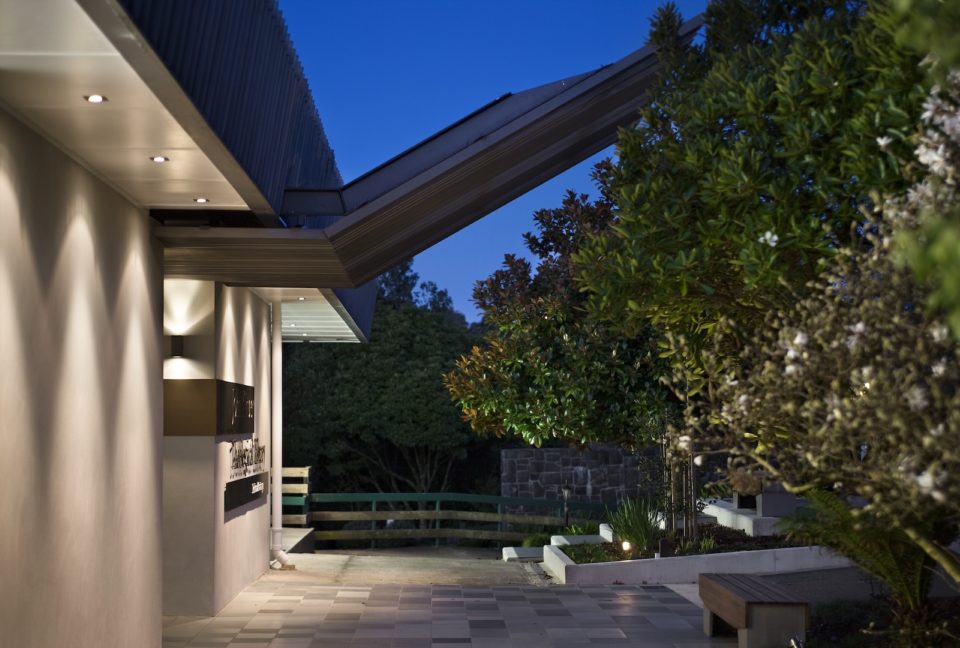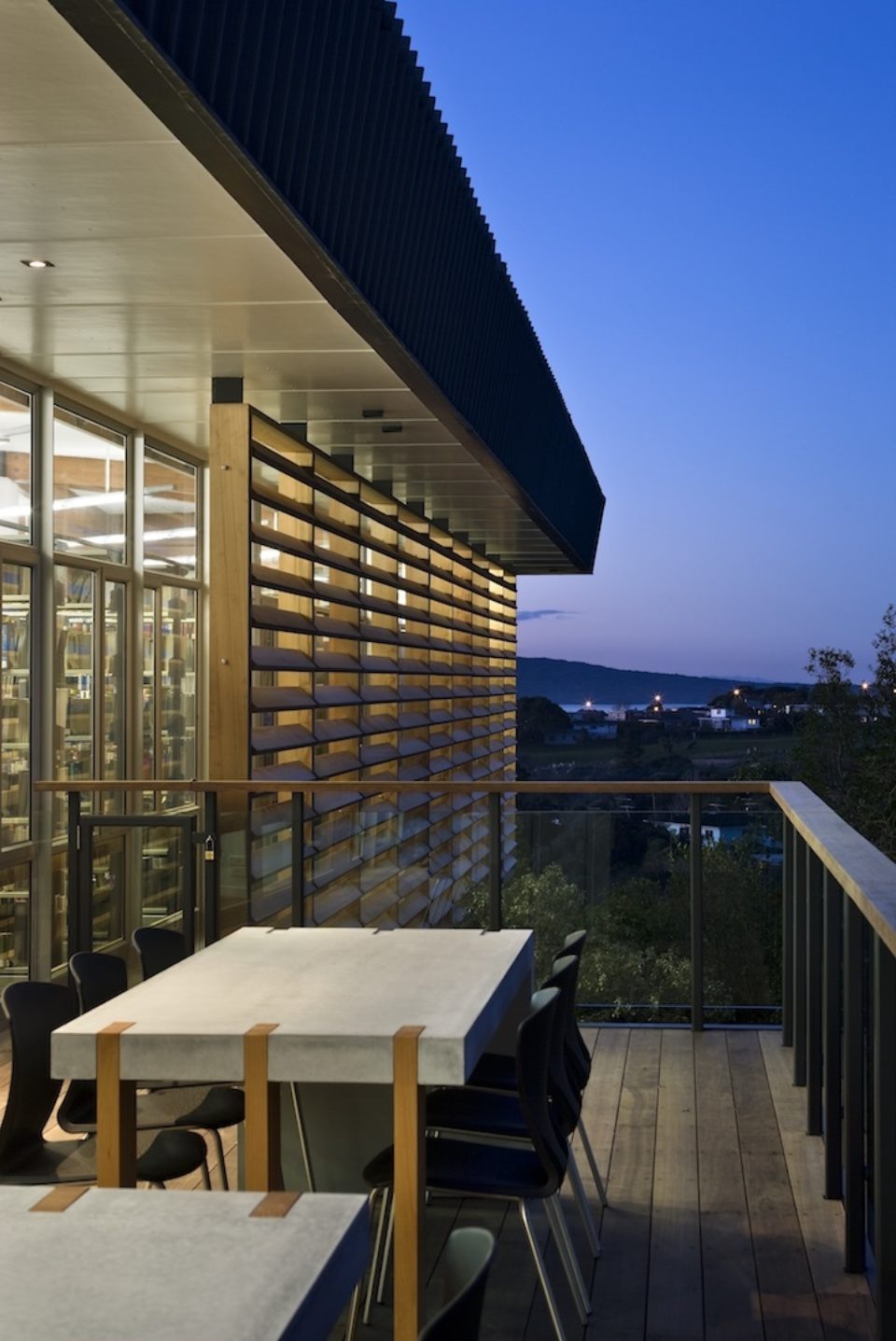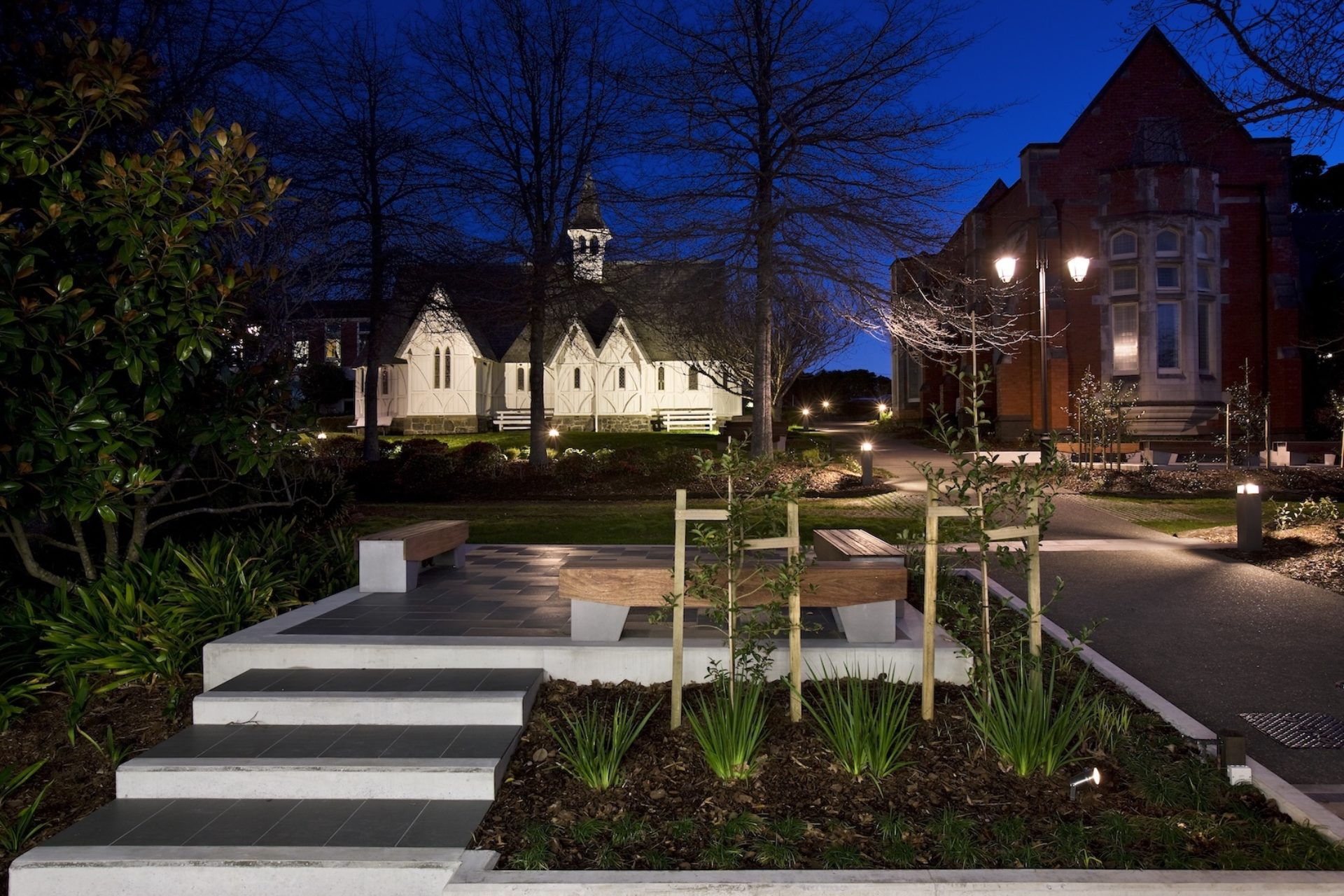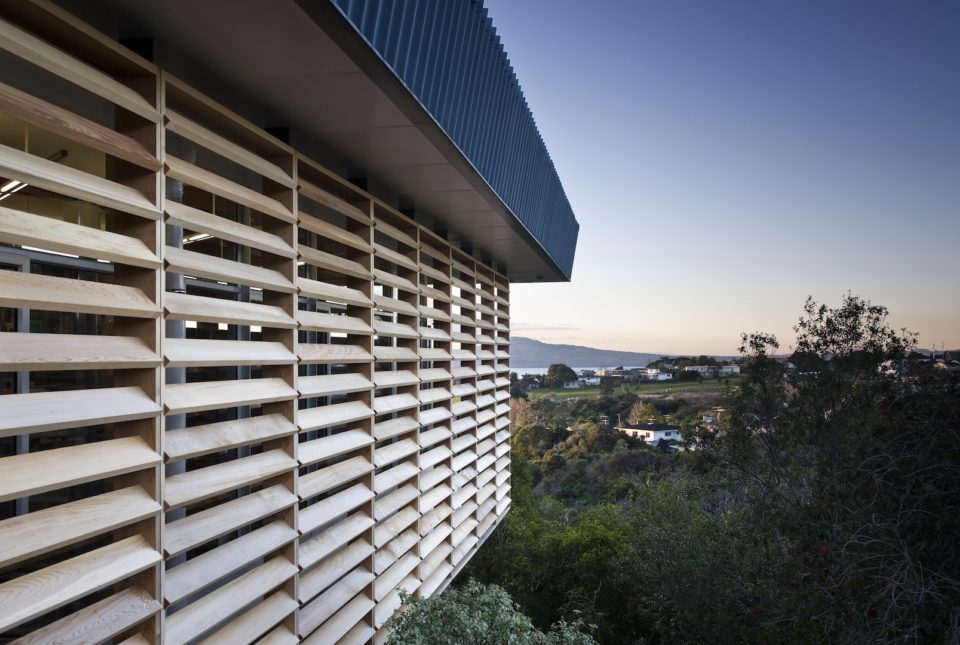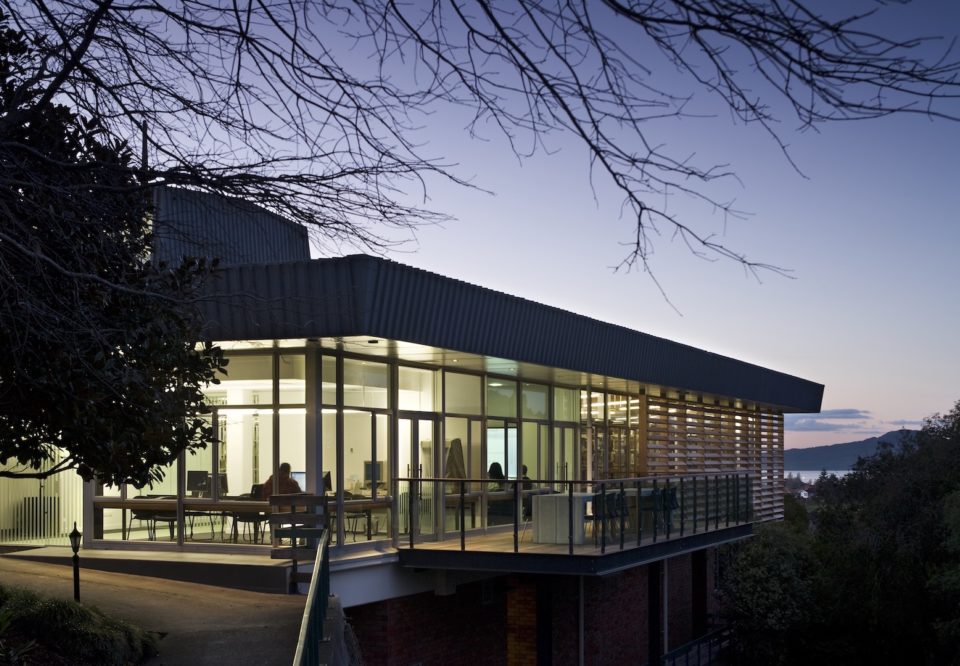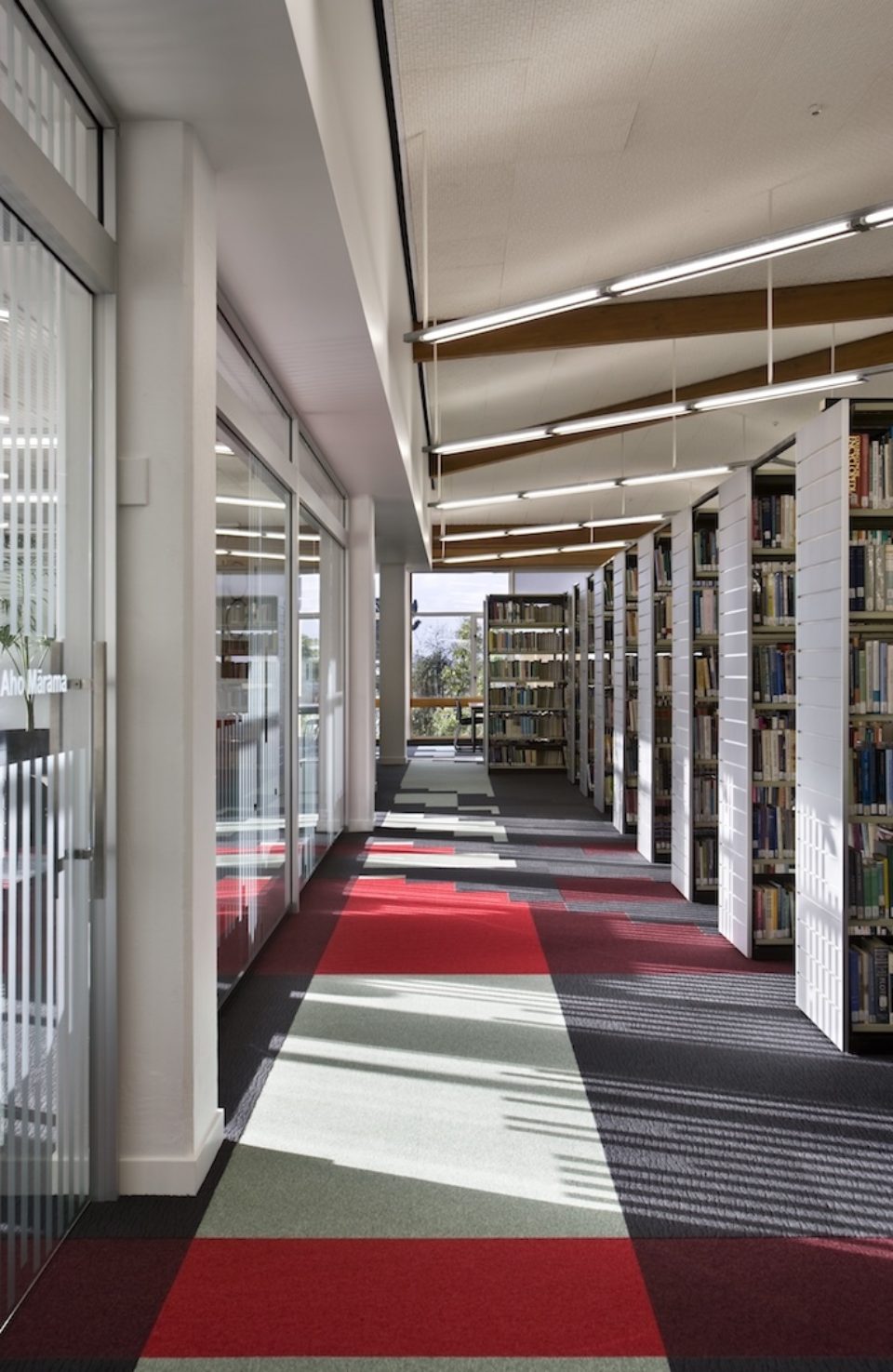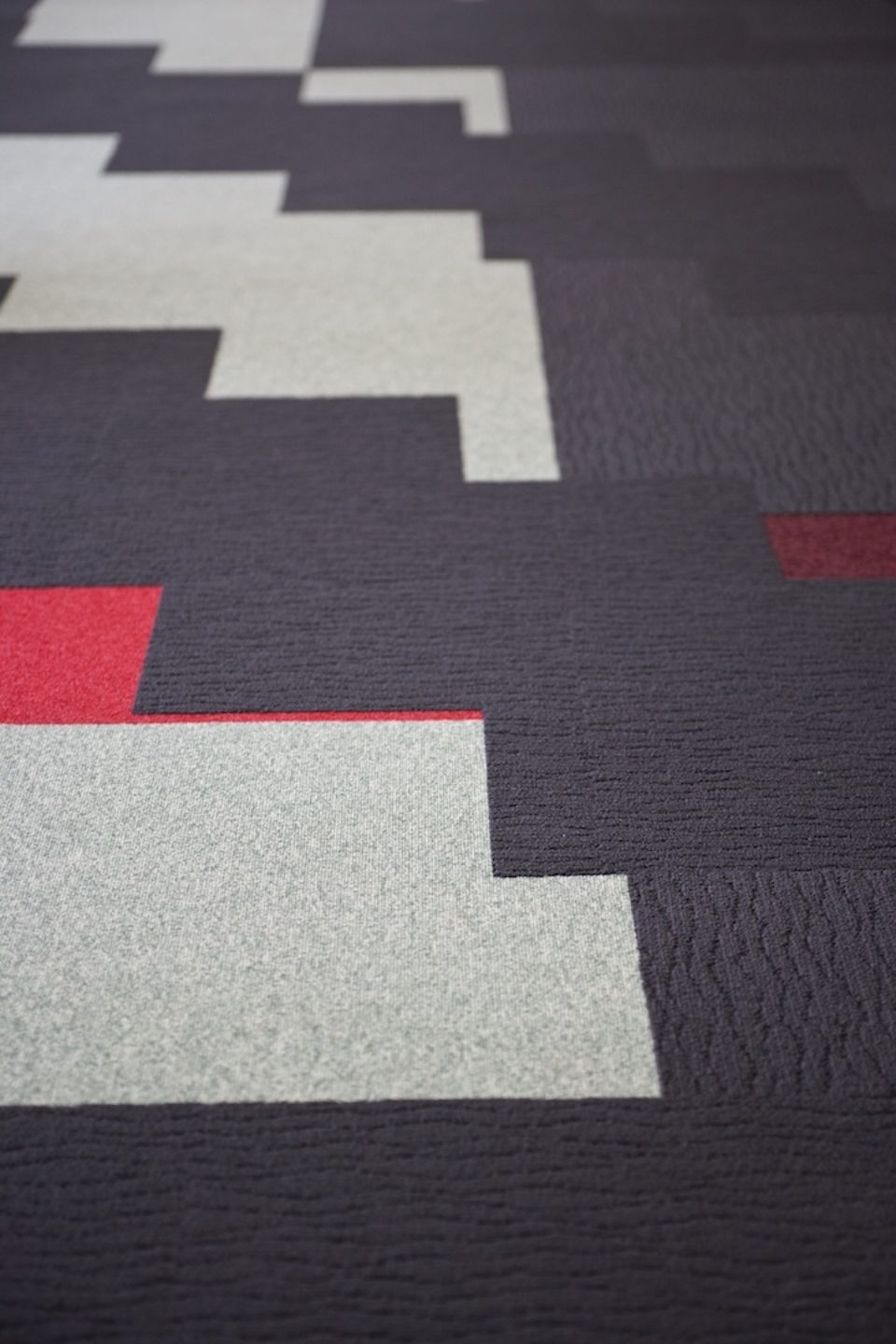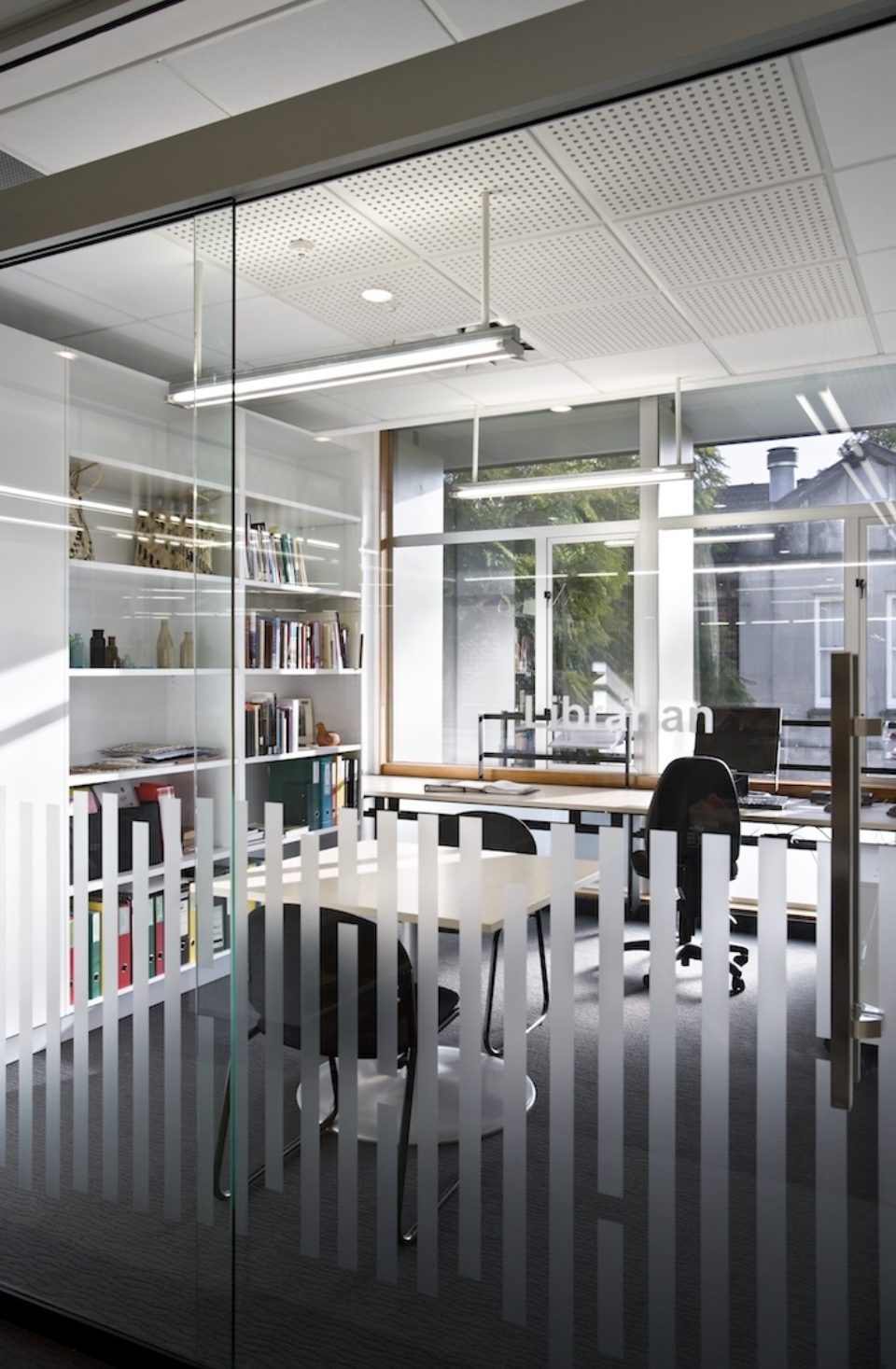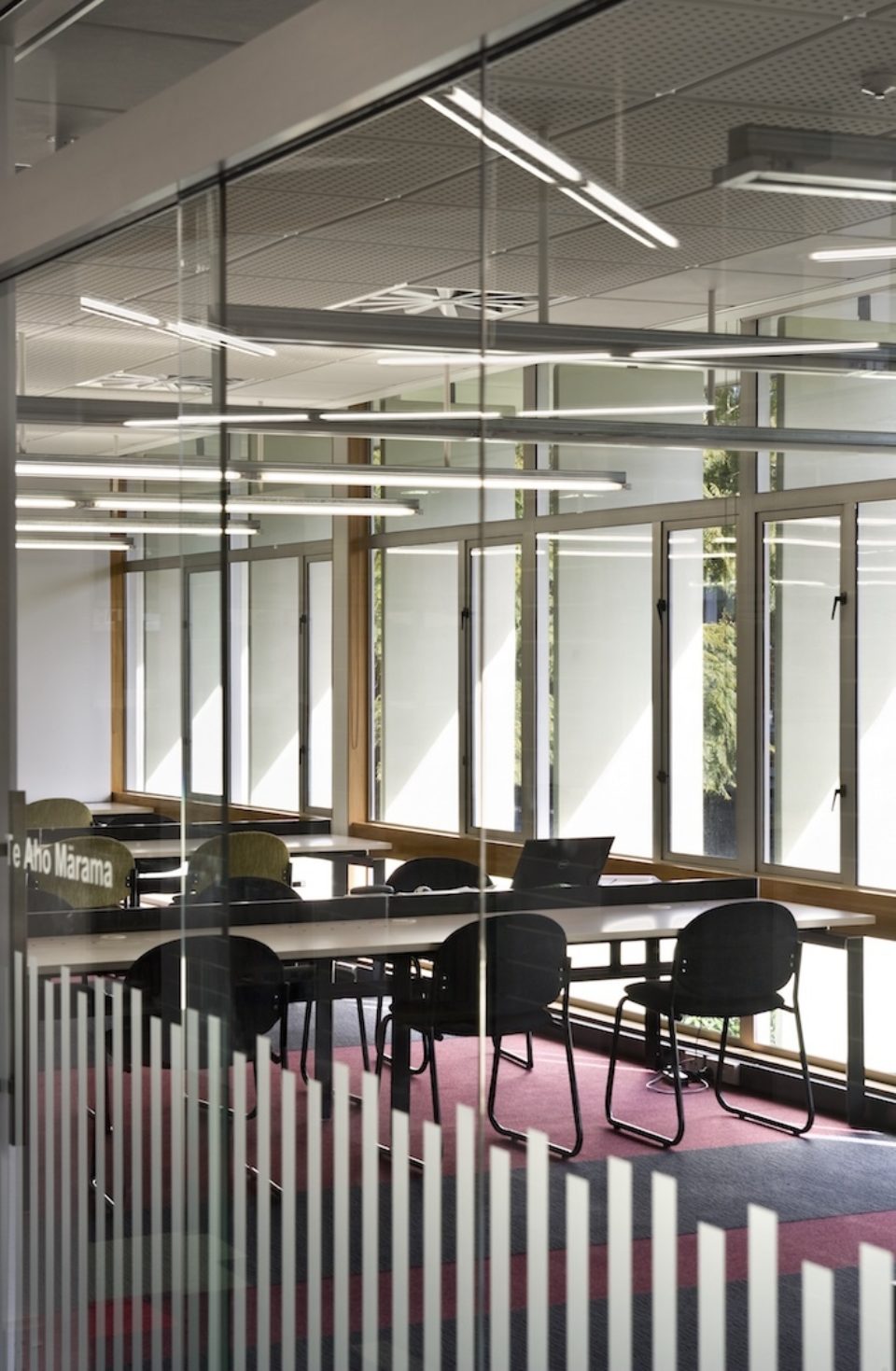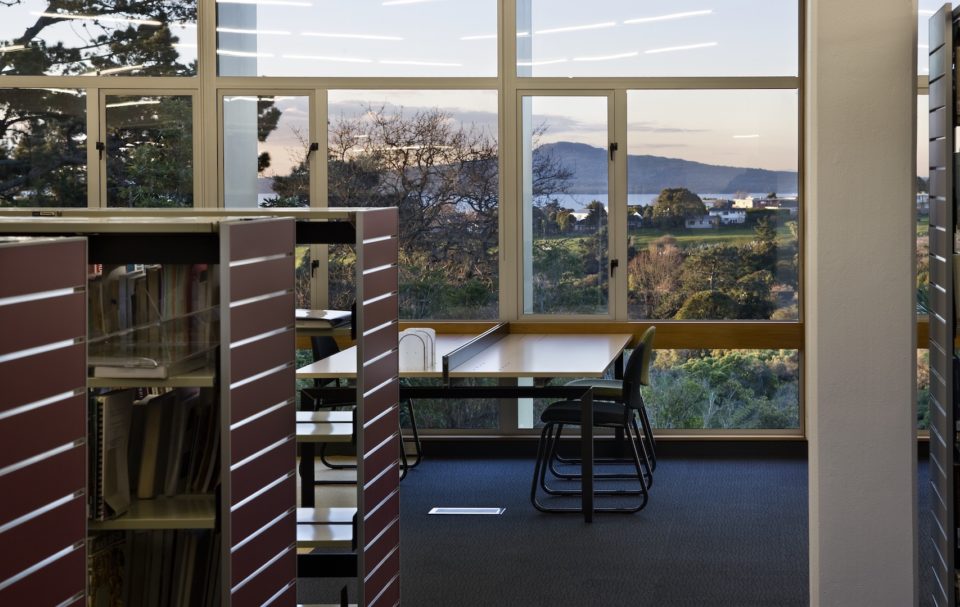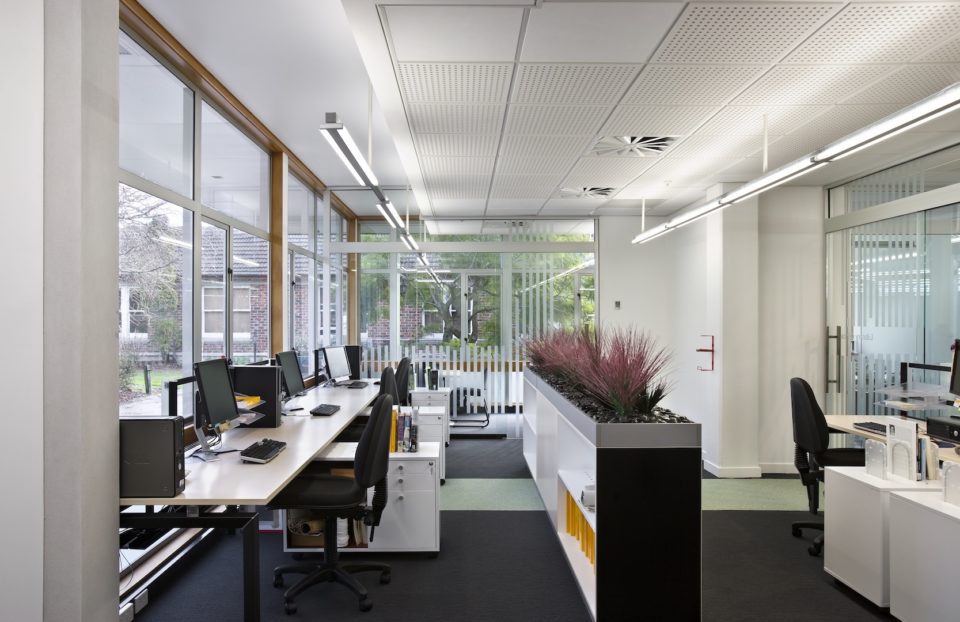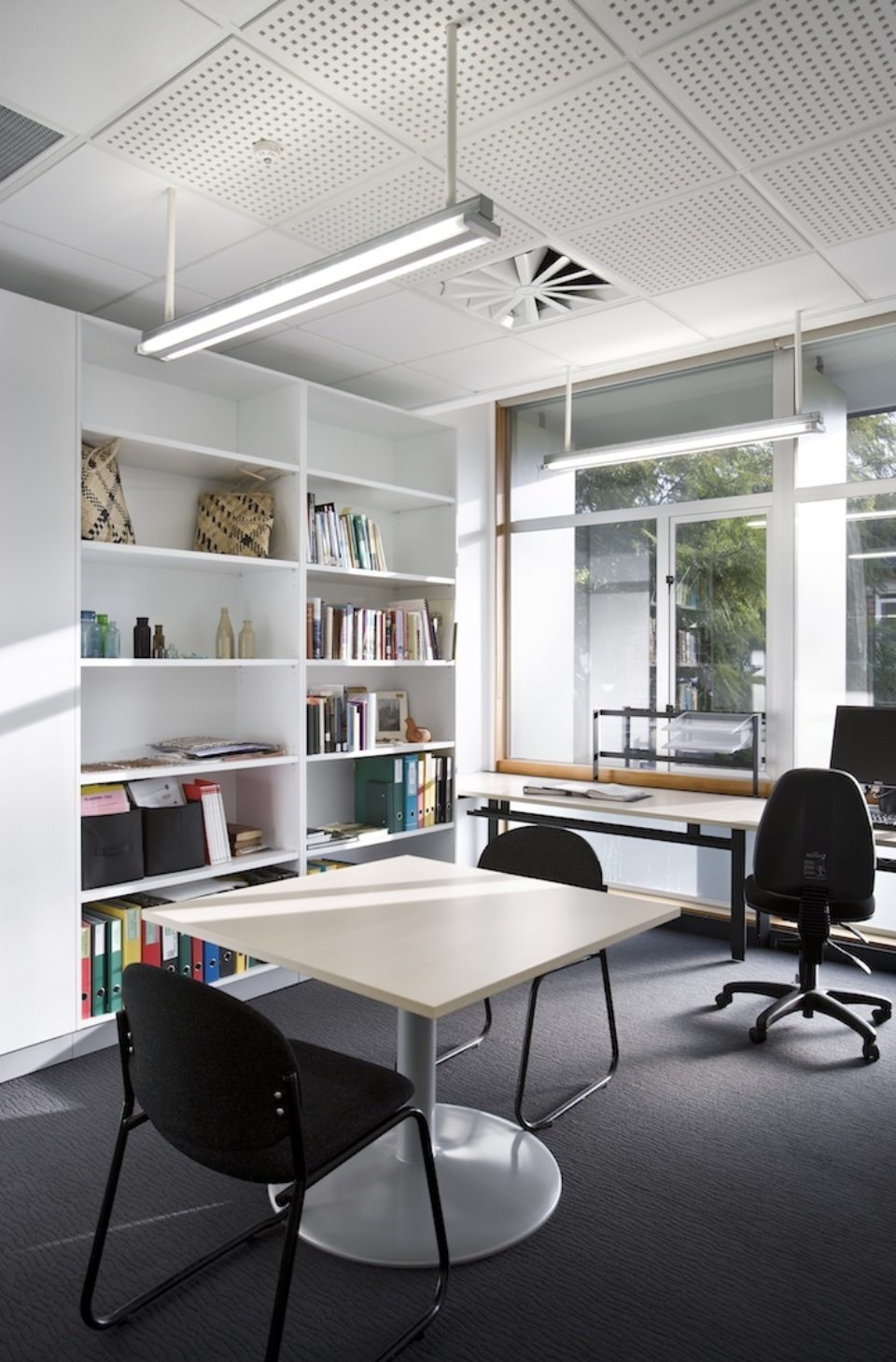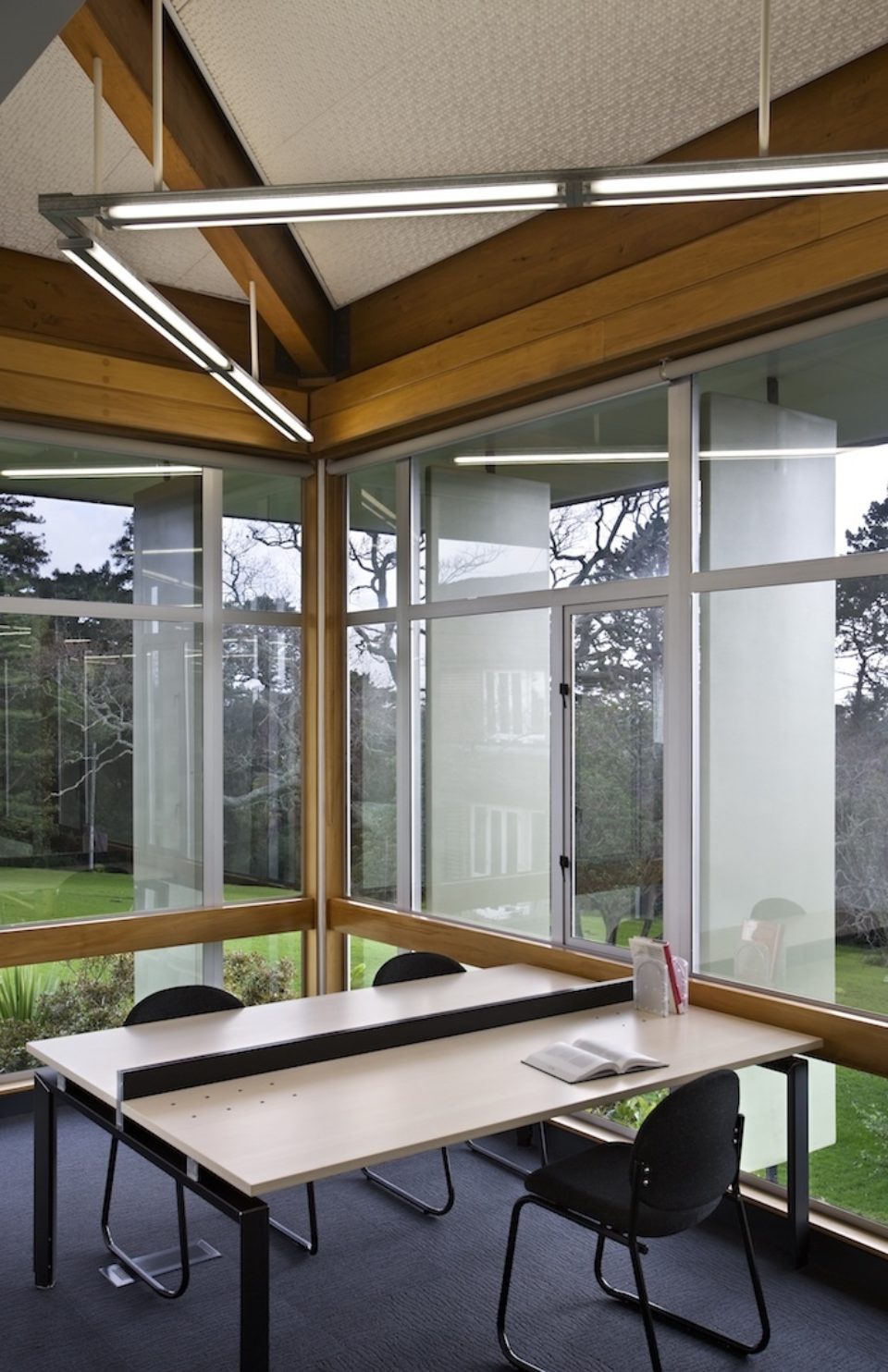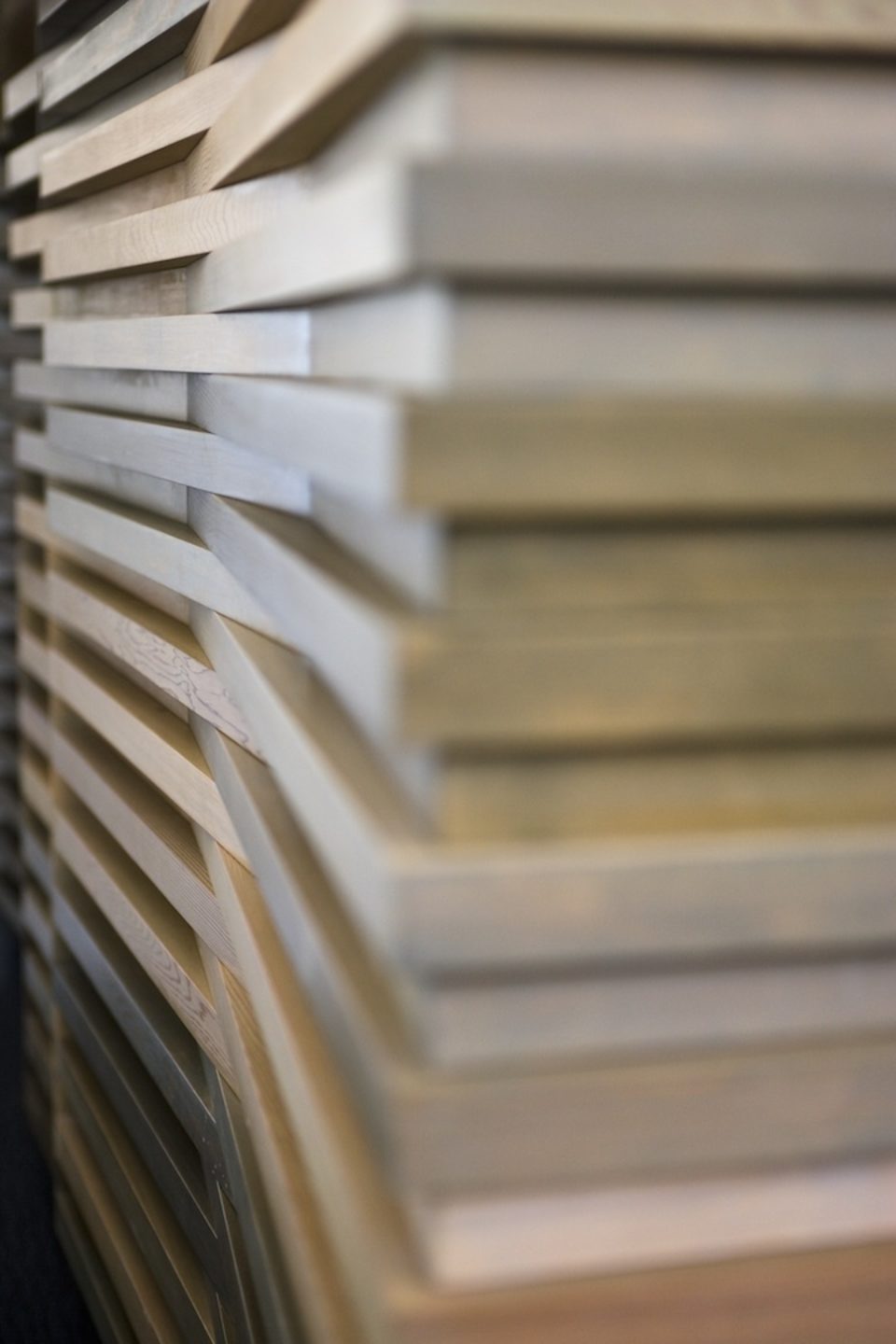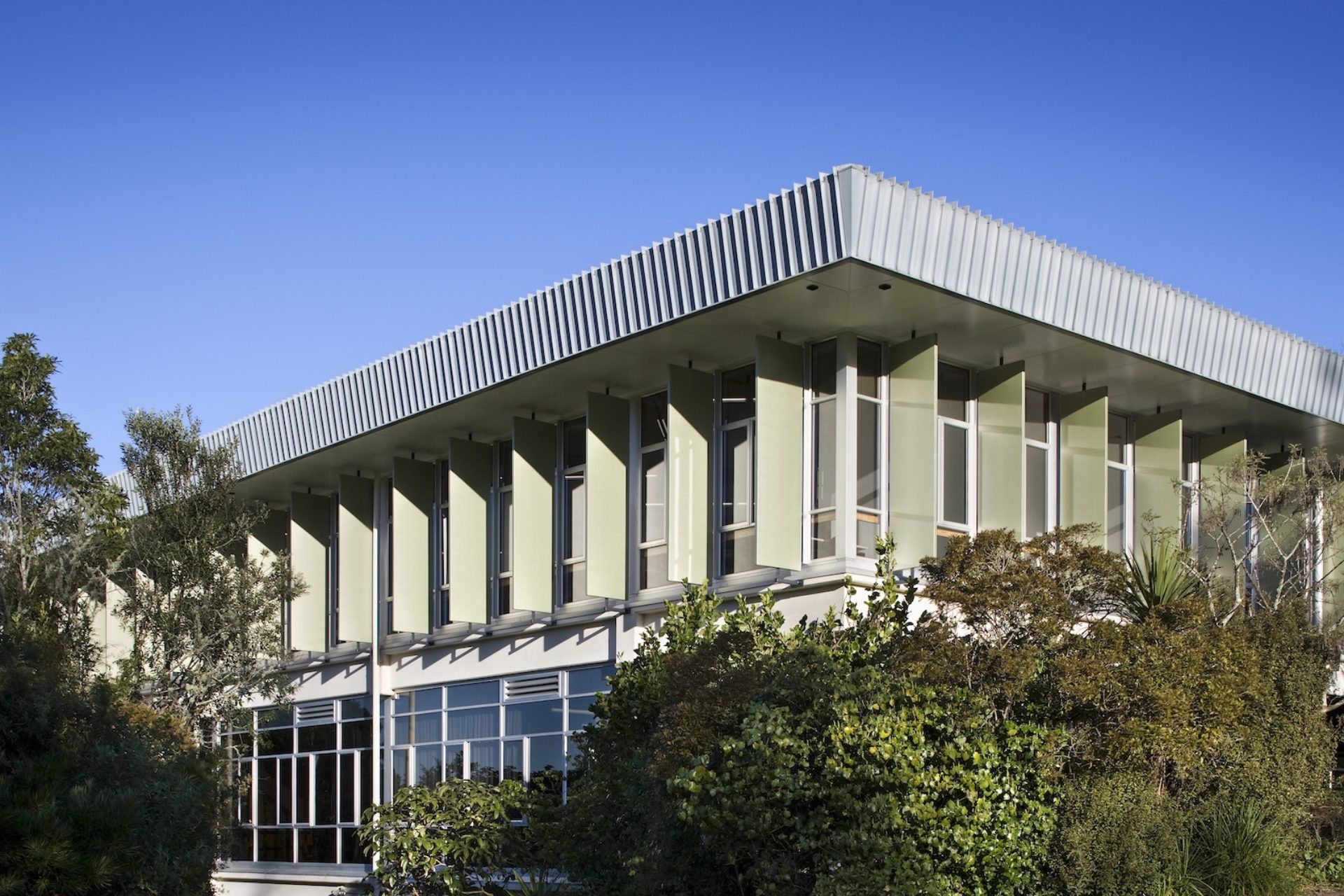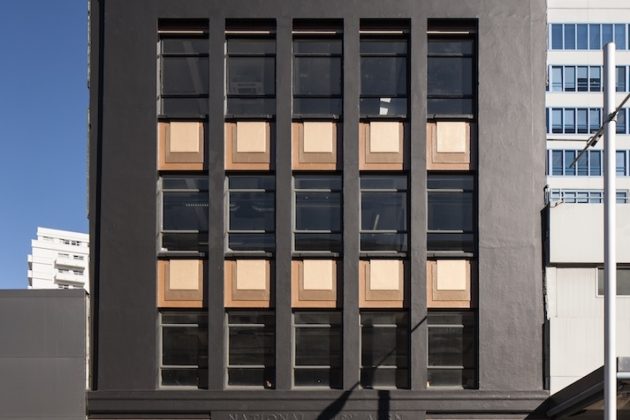St Johns Auckland
Cultural
The upgrade of the largest Theological Library in the Southern Hemisphere was a challenging task. The intentions were to reflect the more diverse culture groups that used the library as well as improve 24 hour access for students.Create a stronger... Read more
The upgrade of the largest Theological Library in the Southern Hemisphere was a challenging task. The intentions were to reflect the more diverse culture groups that used the library as well as improve 24 hour access for students.Create a stronger connection to the surrounding landscape & offer improved Book storage technological facilities & communal outdoor spaces.
The design response: creating a series of pacific & traditional colonial patterns were introduced into the lighting & the Floor tiling. This has unified all the public spaces, creating a conversation of overlay or meshing of our bi cultural heritage.
The triangular wave pattern of the lighting hovers over the book cases, diagonal to the orthogonally library shelving system & the interweaving of a colonial Tartan & a traditional (Te Hikapuhi ) weaving pattern was adopted. The European tartan pattern has used a black base and an accent colour in continuous strips throughout the spaces. This introduces more modern influence, and the colour co-ordination reflects the individual spaces and the different categories of books.
The green is repeated on the floor & the Sun shade exterior fins, drawing the connection toward the sea & surrounding Valley of trees to the North.
Perhaps the strongest gesture towards the cultural influences of the design is the canopy, as well as strongly defining the main entry point of the building.The arrangements of the timber battens and they way in which they overlap and fit into each other, speak of a traditional Maori thatching construction and strongly resembles a weaving pattern (and basket of knowledge).he highlighted coloured tiles also identify key traffic flow paths in and around the library.
Awards
- 2010 – DINZ Best Design Awards, Public and Institutional Spaces ;Bronze


